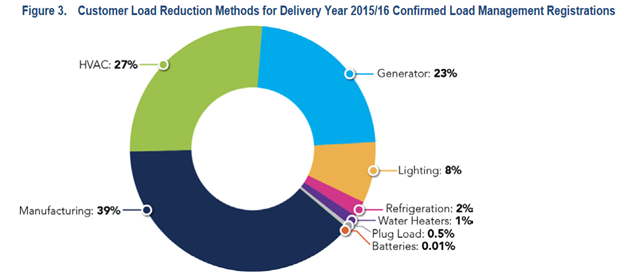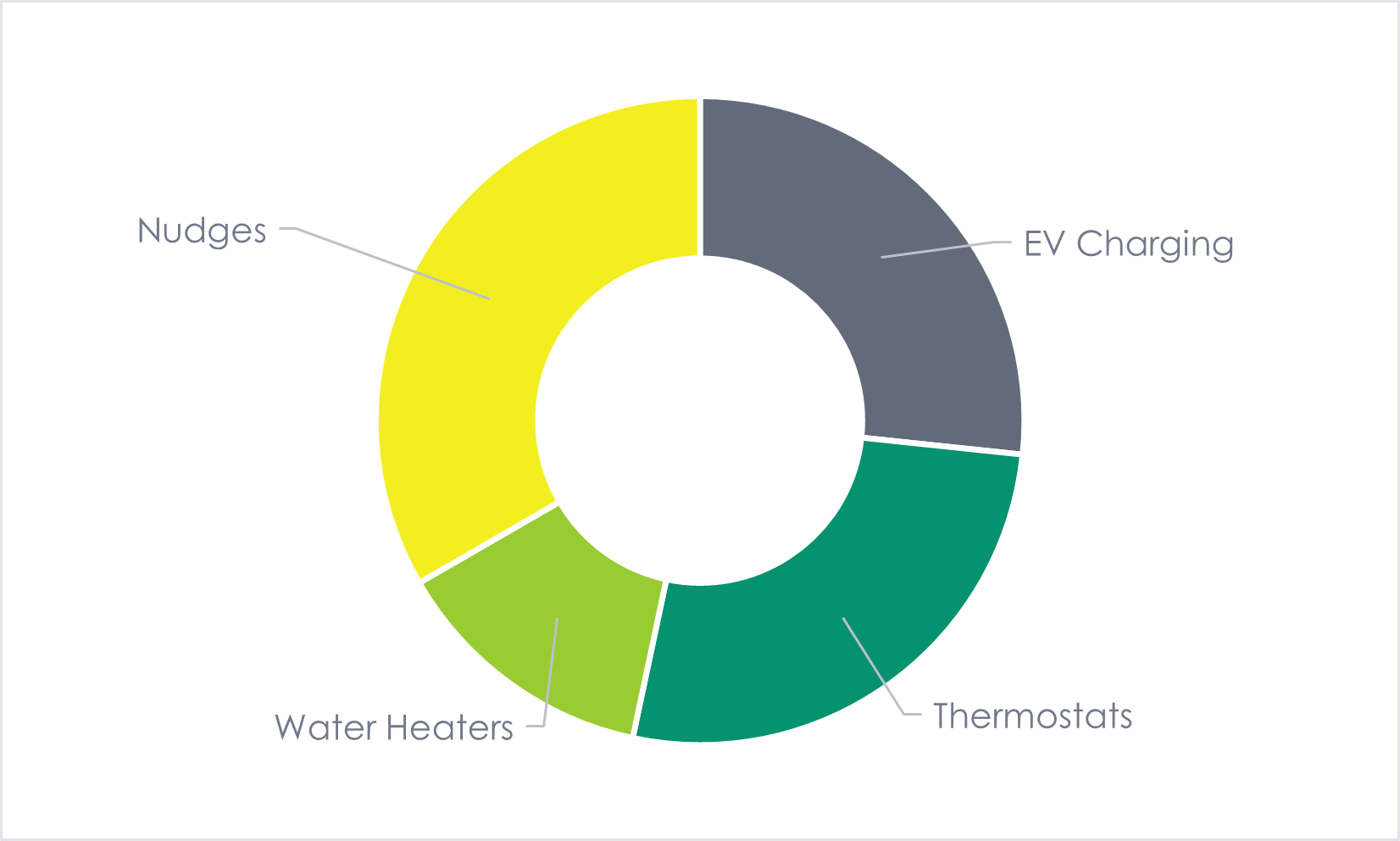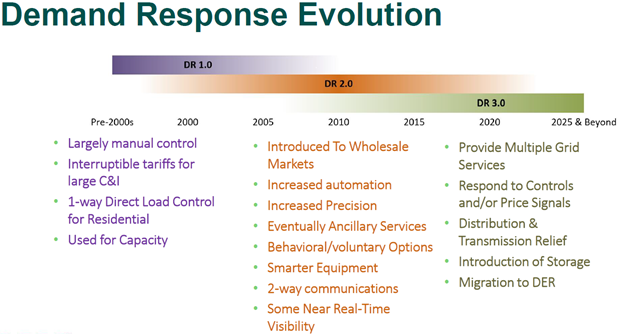
Last week I described how net zero sounds grand, it’s easy to do, but it doesn’t work to support the transition to a clean-energy grid. The reason is that everyone, whether utilities or customers, overproduces simultaneously, and then later, customers all need energy from thermal power plants simultaneously.
We have an exploding deficit of customers to take that overproduction and shift load or store it for use when intermittent renewable supplies shut down. In Renewables at Scale, I described how renewable supply and batteries would never be sufficient. The gaps in intermittent renewable supply are too big for batteries to bridge cost-effectively. Utility Dive agreed, as do hundreds of others, I’m sure.
Defining Demand Response
The solution is a full spectrum demand response (DR) for all types and customers.
FERC defined demand response as “the ability of customers to respond to either a reliability trigger or a price trigger from their utility system operator, load-serving entity, regional transmission organization/independent system operator (RTO/ISO), or other demand response provider by lowering their power consumption.” Energy Efficiency is “using less energy to provide the same or improved level of service to the energy consumer in an economically efficient way.”[1]
“Level of service” in the previous paragraph is the operational impact on the customer. E.g., a decrease in the level of service would include getting darker, cooler, hotter than desired, or “stuffy” in an occupied space. For manufacturing, it might be shutting down a production line or going home for the day.
Demand response includes dispatchable and non-dispatchable resources. Per the referenced FERC National Action Plan on Demand Response manual, dispatchable resources are “planned changes in consumption that the customer agrees to make in response to direction from someone other than the customer.” We’ll come back to this later.
Demand Response Resources Today
Demand response capacity is dominated by manufacturing facilities and processes, mostly from interruption (shutting down a production line or the plant altogether). PJM provides the following recent data as an example. Note, 0.01% batteries.
 Demand Response Action Today
Demand Response Action Today
Per the recent Peak Load Management Alliance (PLMA) conference, the current focus is almost entirely on residential: smart thermostats, water heaters, and managed electric vehicle charging. Below is my brilliant assessment of the conference topics. Nudges, shown in the chart, include time-varying rates and messages of impending doom if you don’t give your air conditioner a break. Commercial and industrial focus? Zero.
Families of Demand Response
You may recall this cartoon from Demand Side Attack, published back in May. I’m pushing this forward to better define what these strategies are, and then I will produce a report card for the strategies.

For context, it is worth adding the evolution of these DR strategies, courtesy of PLMA, in the chart below.
DR Strategy Overview
Here are broader definitions for the DR strategies in the cartoon above.
Interruptible rates, DR 1.0, are the oldest and provide the most significant DR resources. Looking at Figure 3 from PSMJ above, you can see the big hunks of the ring are manufacturing and generator. Those would be interruptible DR resources. Customers are typically called a day ahead of an event and told to reduce demand by or to contract demand kW. It depends on the type of contract. In exchange, customers save money on the demand they commit to curtail.
Direct load control, also DR 1.0, includes radio or pager networks (they still exist) to ping switches on residential and small commercial air conditioners or electric water heaters. These devices are cycled during an event by the central utility command. Customers get some dollar discount, like $20 per year, on their bills to allow the utility to cycle their equipment during several peak events per year. Some programs offer varying cycling strategies, like 25%, 50%, or more of the time during an event.
I believe most smart thermostat participants include BYOD, or bring your own device, purchased by customers who then enroll in the program. In exchange for doing so, customers get an incentive like the direct load control incentive. Air conditioning loads at participating homes and businesses are reduced via the internet by increasing thermostat temperatures.
Grid interactive efficient buildings (I skip the efficient because that’s an extra word shoved in there to make an acronym, GEBs. What’s wrong with GIBs? Per the urban dictionary, a gib is an ungrateful person who demands handouts. There you are – unparalleled value in culture as well as all things energy.) Grid interactive buildings are a theory at this point. I wrote six posts on grid-interactive buildings ending here. Grid-interactive buildings would shape, shift, shed, or shimmy (modulate) daily. One enormous challenge for GEBs is assessing the value of these resources.
Price-responsive DR includes time-of-use, demand rates, and critical peak pricing. Time-of-use means rates are higher on-peak – like the old long-distance rates. (Ten cent weekends! Weehoo!) Energy prices are higher every day during the peak window as set by the load-serving entity.[2]
Demand rates have been used for large commercial and industrial facilities for decades. They provide a more accurate bill for the cost of service by charging a peak demand charge (fixed cost) and a lower price for the energy consumed (incremental cost). With higher levels of intermittent renewables online, some utilities get nearly all their revenue from demand charges, and they give the energy away. Customer peak control is the name of the game. To go further, demand rates would expand to smaller commercial, industrial, and residential customers, which are billed on energy consumption only.
Critical peak pricing is like time-of-use, except the price differentials between on and off the critical peak are more extreme. Energy rates are lower nearly all the time, except on critical peak days when they are very high, or even double, to especially encourage curtailment activity.
Let’s Move!
We need all types of demand response yesterday, but unfortunately, the “National Action Plan” is still just a plan from 2010. How about we get moving on it? We will examine these strategies in more detail and provide that report card next week.
[1] https://www.energy.gov/sites/prod/files/oeprod/DocumentsandMedia/FERC_NAPDR_-_final.pdf
[2] The load serving entity sends customers their utility bills and includes distribution utilities and retail providers in deregulated electricity markets.


 Demand Response Action Today
Demand Response Action Today
